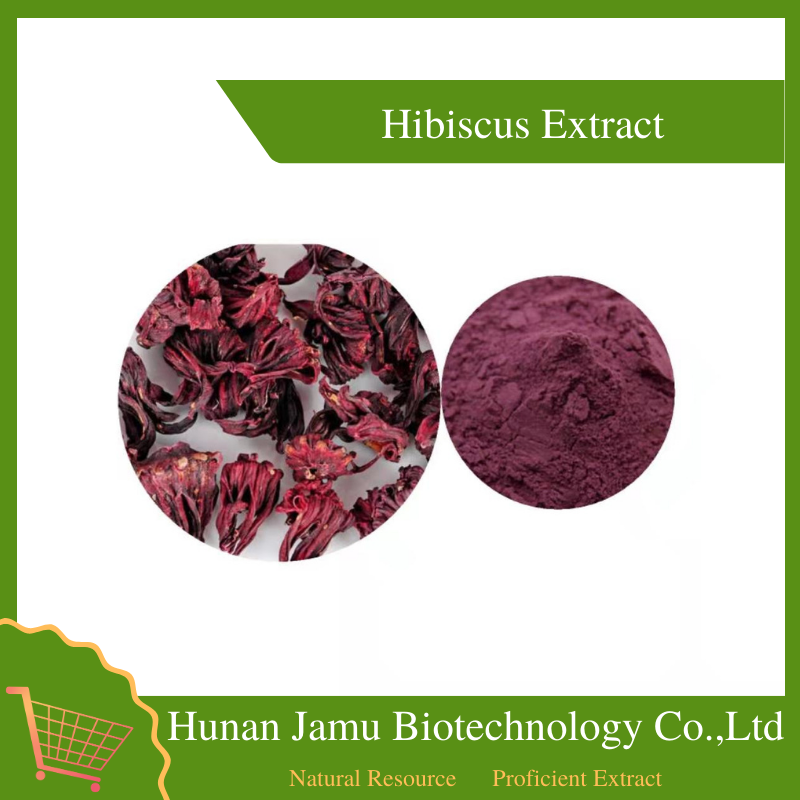 You are here:
Home
> Product Center
> Vegetable & Fruit Ingredient
> View Details
You are here:
Home
> Product Center
> Vegetable & Fruit Ingredient
> View Details


 You are here:
Home
> Product Center
> Vegetable & Fruit Ingredient
> View Details
You are here:
Home
> Product Center
> Vegetable & Fruit Ingredient
> View Details

【Product Name】: Hibiscus Extract
【Botanical Name】: Hibiscus sabdariffa L.
【Part used】: Flower
【Appearance】: Purple Red powder
【Specification】: 4:1 10:1 / Regular Powder /Anthocyandins 1-10% / Vitamin C 5%
【Storage Period】: 24 Months
【Package】: 1kg/bag 25kg/drum
【Test Method】: HPLC
【Storage Conditions】: Store in cool and dry places. Keep away from strong light and heat.
Description
Hibiscus is a broad-leaved, erect and branched annual herb, 2–2.5 m tall. It has a deep penetrating tap root with bulbous, smooth or nearly smooth, cylindrical, typically red stems with spiny hairs.
Leaves are usually alternate, 7.5–12.5 cm long, green with reddish veins and long or short petioles. Leaves of young seedlings and upper leaves of older plants are simple; lower leaves are deeply 3–7 lobed; the margins are toothed.
Flowers are axillary, solitary, predominantly yellow and red, regular, pedicellate; epicalyx of about 12 reddish bracts, connate at base, 10–12 mm long; calyx 15–30 mm long (enlarging in fruit to 40 mm), 5 reddish, large, accrescent, fleshy sepals, all sepals fused at base.
Fruit of hibiscus is normally dehiscent, 5-valved, non-fleshy, bright red ovoid capsule, 18–20 mm long by 15–18 mm wide. The fruit is green when young and turns into bright red as they mature and consists of 5 valves with each valve containing 3–4 seeds. Later capsule turns brown and split open when completely mature and dry. Seeds are normally kidney-shaped, light brown, 3–5 mm long, and covered with minute stout and stellate hairs. The fruit has a tart fruity flavor similar to a cranberry, rhubarb and red currant.
Chemical CompositionThe flower contains cotton pigment, quercetin, hibisatin, citric acid, malic acid and a small amount of sabdartrin and alkaloids. The dried calyx contains citric acid, malic acid, hibiscus acid, tartaric acid, vitamin C and pectin.